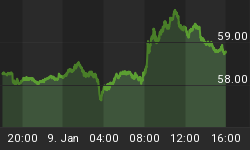Last week the Fed announced that it would purchase $300 billion of longer-maturity Treasury securities. The mainstream media got all excited, talking about the Fed "printing money." But the Fed figuratively "prints money" or creates credit whenever it acquires assets - loans or investments. For example, when the Fed purchases a mortgage-backed security, it pays for the security simply by crediting the deposit (reserve) account of the security seller's bank. The seller's bank, in turn, credits the seller's deposit account. If the seller happens to be a bank, then just the bank's reserve account gets credited. Either way, the Fed is figuratively creating credit and, in the case when the seller of the security is a nonbank, money "out of thin air." To create credit out of thin air, it does not matter whether the Fed purchases a mortgage-backed security or a Treasury security. Moreover, when the Fed lends to banks through its discount window, it also is creating credit out of thin air. In fact, when the Fed pays its employees, it is creating credit and money out of thin air.
Suppose the Treasury issues an additional $100 billion of securities and the Fed purchases an additional amount of mortgage-backed securities. Is the Fed "monetizing" the Treasury debt? Directly, no. Indirectly, yes. Funds are fungible. All else the same, the Treasury's increase in the supply of securities is offset by a decrease in the amount of mortgage-backed securities as a result of the Fed's purchase. So, the amount of securities to be held by the non-Fed public is unchanged. Indirectly, then, the Fed has monetized the increased debt issuance by the Treasury.
Getting back to the Fed's announcement last week, not only did it say that it would purchase $300 billion of longer-maturity Treasury securities, but it also would purchase an additional $750 billion of mortgage-backed securities and an additional $100 billion of direct debt of government-sponsored agencies (e.g. Fannie and Freddie debt). So, the Fed announced "monetization" in an amount of $1.15 trillion, all else the same. But wait, there's more. The Fed also has begun another monetization program via the Term Asset-backed securities Loan Facility (TALF). TALF currently is permitted to provide up to $1 trillion of new credit to the financial system - thus, another $1 trillion of monetization.
From December 2007 to December 2008, Federal Reserve Bank credit more than doubled, increasing from about $877 billion to $2.2 trillion. Mama mia, that's a lot of monetization! But a sizeable portion of the increase in Fed credit just ended up as idle excess reserves on the books of banks and other depository institutions. Federal Reserve Bank credit minus excess reserves went from $875 billion in December 2007 to almost $1.5 trillion in December 2008 (see chart below). Just as the non-bank public's demand for money to hold has increased in the past year, banks' demand for "money" or reserves to hold also has increased. Had the Fed not satisfied both the banks' and the non-bank public's increased demand for money by creating more of it, economic activity would have been even weaker than it was.
Chart 1
In the coming months, the federal government is going to be increasing its debt issuance to finance its increased spending as a result of the recently-passed fiscal stimulus program. The Congressional Budget Office is forecasting a federal budget deficit for fiscal year 2009 of about $1.8 trillion. As mentioned above, the Fed is on course to create about $2.15 trillion of new credit in the months ahead. All else the same, the Fed's monetization of debt through the purchase of mortgage-backed securities, Treasury securities or through the TALF program in conjunction with the federal government's increased spending will generate stronger economic activity. If the increased federal spending were being funded with increased taxes, then those paying higher taxes would cut back on their spending as the federal government increased its spending. Net, net, there would not be much increase in total spending. The same would hold true if the federal government's increased spending were being funded with increased Treasury debt purchased by the non-bank public and not offset by Fed purchases of some kind of debt. But if the Fed purchases some kind of debt in amounts equal to the federal government's increased debt issuance, then the federal government can increase its spending without any one else having to cut back on his or her spending. In the short run, this will boost real economic activity. Of course, farther down the road, this will increase the rate at which prices rise - prices of goods, services and assets. Ben Bernanke's "money-dropping" helicopter has been replaced by a C-5 Galaxy transport!
Paul Kasriel is the recipient of the 2006 Lawrence R. Klein Award for Blue Chip Forecasting Accuracy















